Abstract
Biologically produced pyocyanin was purified, and the nature of its antibacterial action was determined for several bacteria. The pigment was shown to be bactericidal for all susceptible organisms. The bactericidal effect was dependent upon pyocyanin concentration and resulted in decreases in viability ranging from 1 to 8 log viable cells ml-1. The gram-positive bacteria were more susceptible as a group to the antibiotic action than were the gram-negative bacteria. All apyocyanogenic pseudomonads tested were totally resistant to the pigment, suggesting that resistance may be a characteristic of the genus. Pseudomonas aeruginosa, the producer organism, was also essentially unaffected by high concentrations of pyocyanin. Facultative anaerobes were twofold or more times resistant to the action of the pigment under fermentative conditions; however, the antibiotic action did not require oxygen since denitrifying bacteria were more susceptible during anaerobic respiration than during aerobic respiration.
Full text
PDF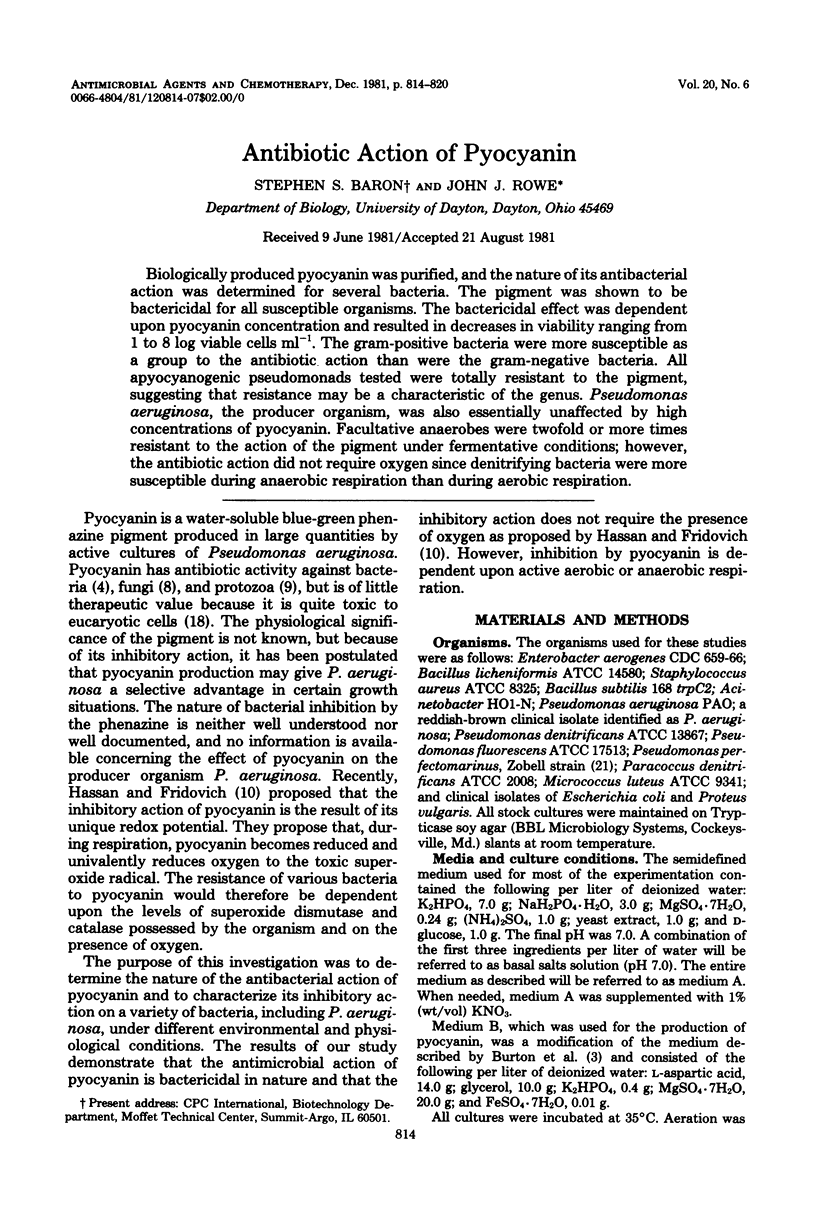
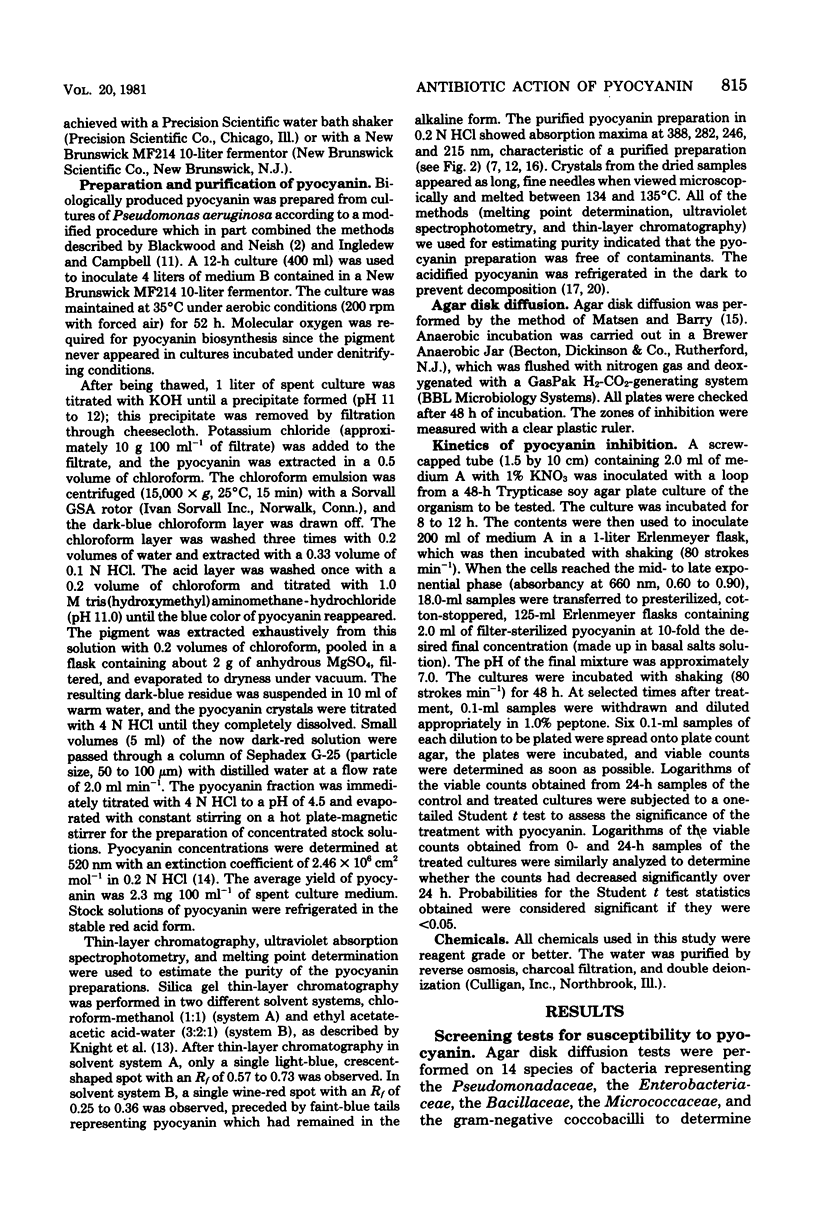
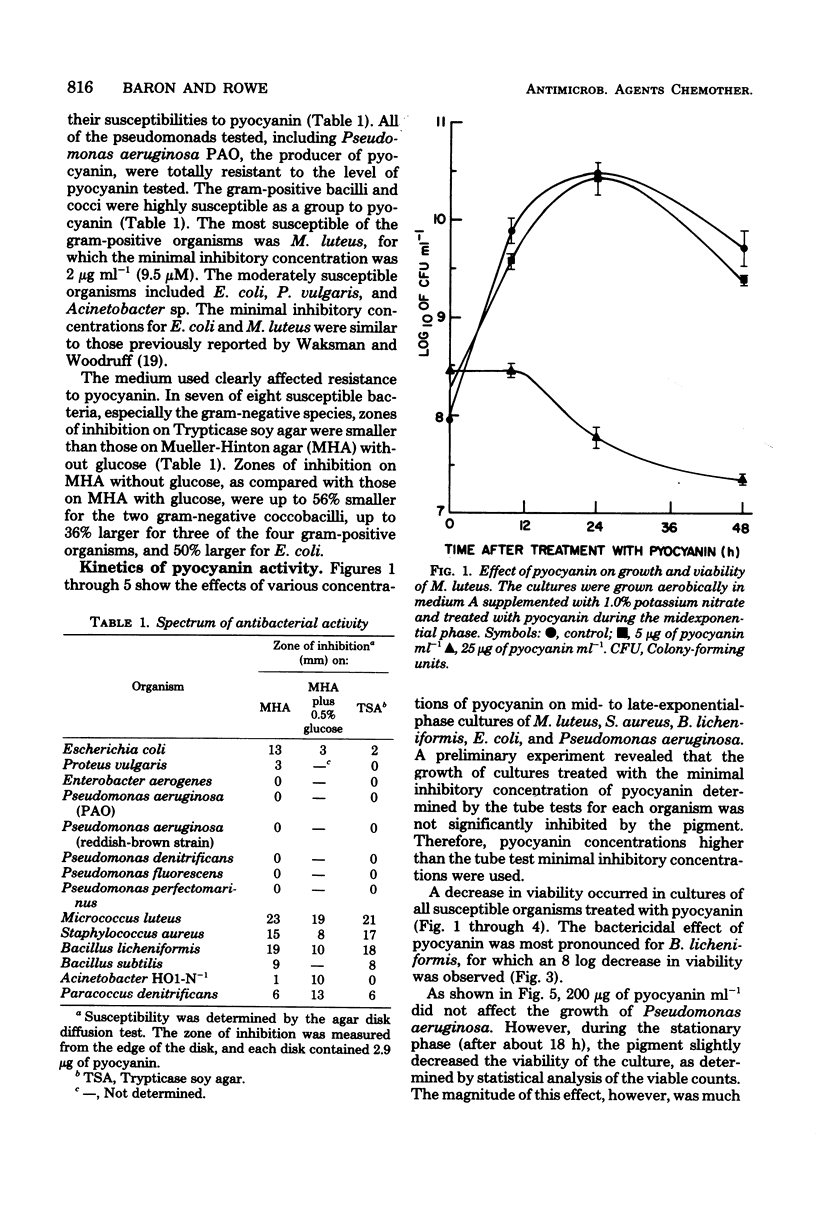
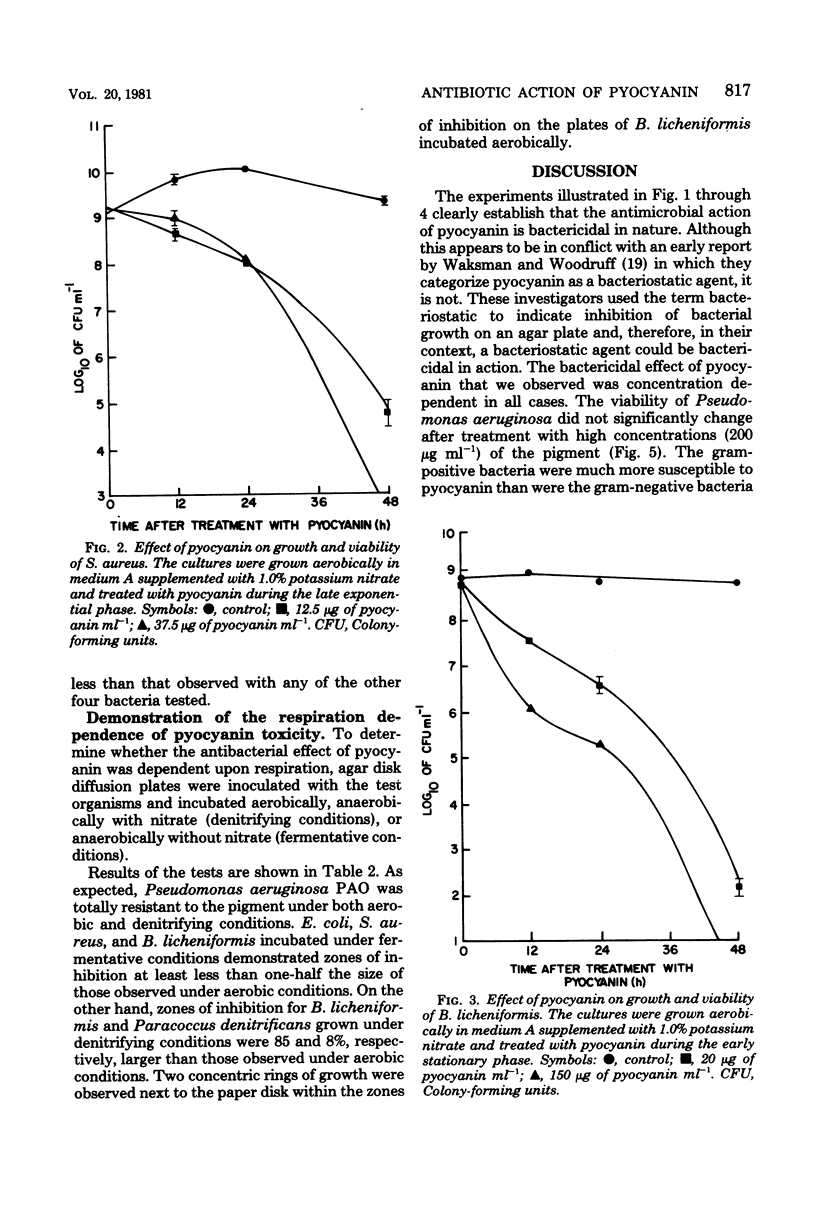
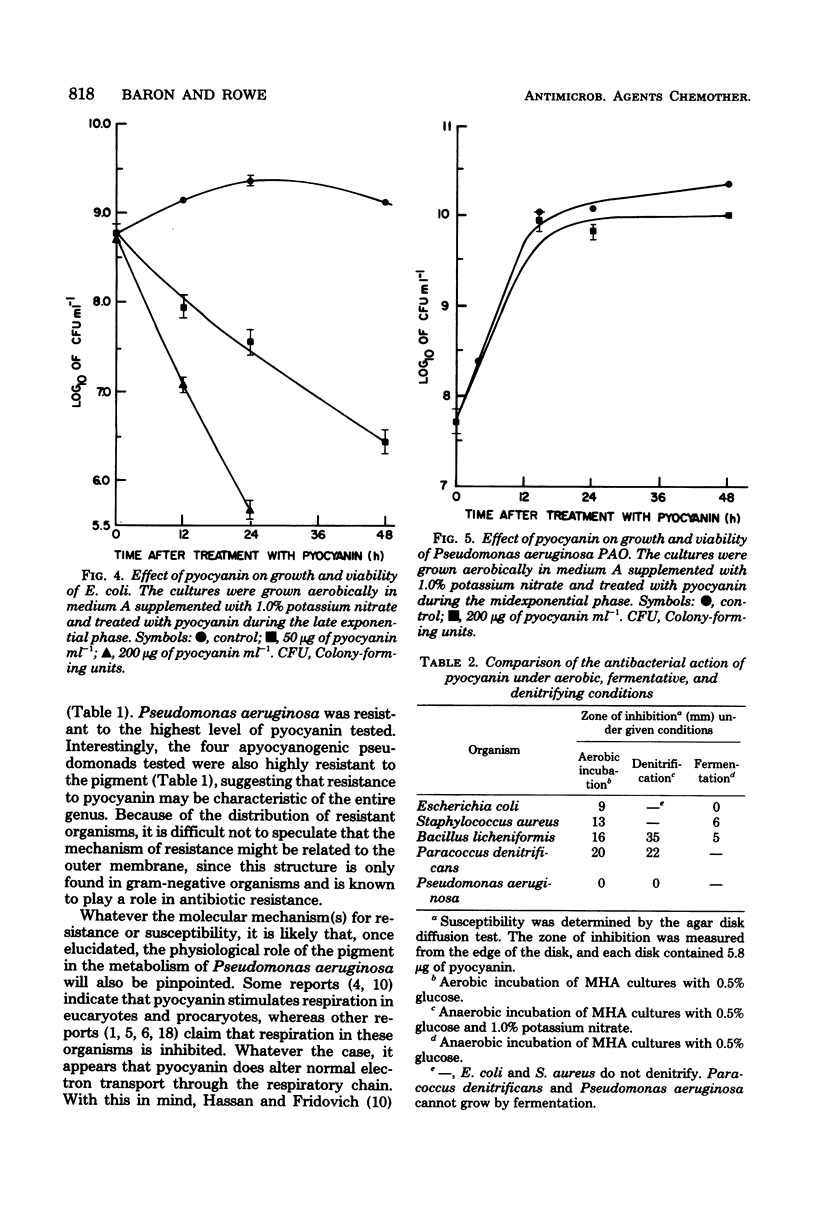
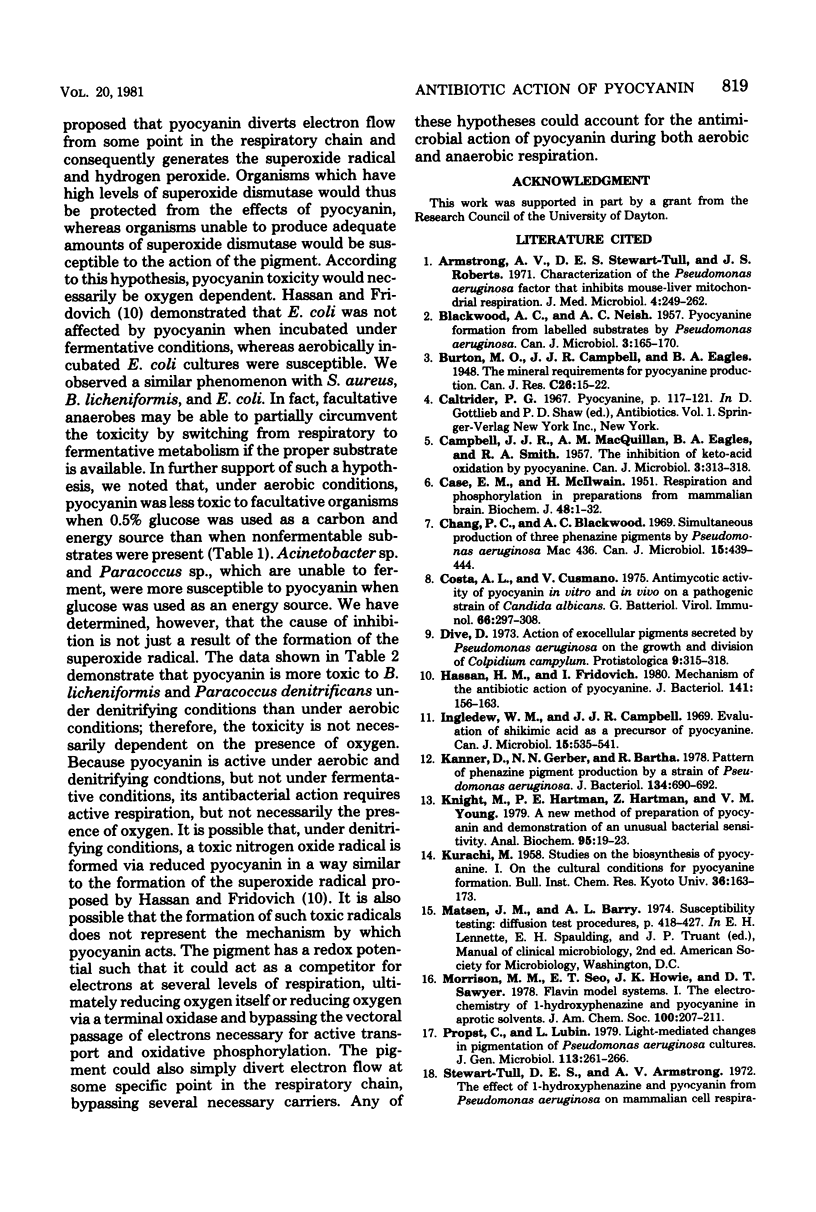
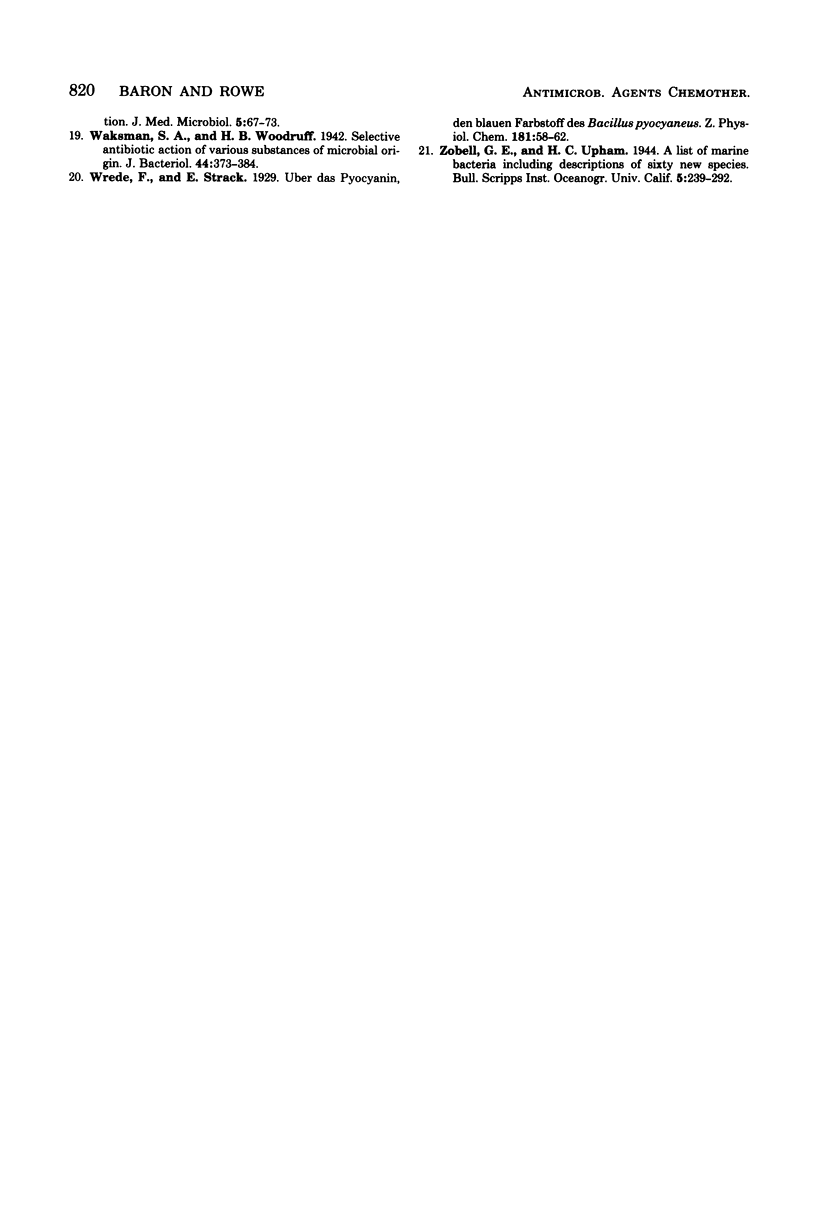
Selected References
These references are in PubMed. This may not be the complete list of references from this article.
- Armstrong A. V., Stewart-Tull D. E., Roberts J. S. Characterisation of the Pseudomonas aeruginosa factor that inhibits mouse-liver mitochondrial respiration. J Med Microbiol. 1971 May;4(2):249–262. doi: 10.1099/00222615-4-2-249. [DOI] [PubMed] [Google Scholar]
- BLACKWOOD A. C., NEISH A. C. Pyocyanine formation from labelled substrates by Pseudomonas aeruginosa. Can J Microbiol. 1957 Mar;3(2):165–169. doi: 10.1139/m57-020. [DOI] [PubMed] [Google Scholar]
- CAMPBELL J. J., MACQUILLAN A. M., EAGLES B. A., SMITH R. A. The inhibition of keto acid oxidation by pyocyanine. Can J Microbiol. 1957 Mar;3(2):313–318. doi: 10.1139/m57-035. [DOI] [PubMed] [Google Scholar]
- CASE E. M., McILWAIN H. Respiration and phosphorylation in preparations from Mammalian Brain. Biochem J. 1951 Jan;48(1):1–11. doi: 10.1042/bj0480001. [DOI] [PMC free article] [PubMed] [Google Scholar]
- Chang P. C., Blackwood A. C. Simultaneous production of three phenazine pigments by Pseudomonas aeruginosa Mac 436. Can J Microbiol. 1969 May;15(5):439–444. doi: 10.1139/m69-077. [DOI] [PubMed] [Google Scholar]
- Costa A. L., Cusumano V. Attivita' antimicotica della piocianina in vitro ed in vivo su di um ceppo patogeno di Candida albicans. G Batteriol Virol Immunol Microbiol. 1973 Jul-Dec;66(7-12):297–308. [PubMed] [Google Scholar]
- Hassan H. M., Fridovich I. Mechanism of the antibiotic action pyocyanine. J Bacteriol. 1980 Jan;141(1):156–163. doi: 10.1128/jb.141.1.156-163.1980. [DOI] [PMC free article] [PubMed] [Google Scholar]
- Ingledew W. M., Campbell J. J. Evaluation of shikimic acid as a precursor of pyocyanine. Can J Microbiol. 1969 Jun;15(6):535–541. doi: 10.1139/m69-092. [DOI] [PubMed] [Google Scholar]
- Kanner D., Gerber N. N., Bartha R. Pattern of phenazine pigment production by a strain of Pseudomonas aeruginosa. J Bacteriol. 1978 May;134(2):690–692. doi: 10.1128/jb.134.2.690-692.1978. [DOI] [PMC free article] [PubMed] [Google Scholar]
- Knight M., Hartman P. E., Hartman Z., Young V. M. A new method of preparation of pyocyanin and demonstration of an unusual bacterial sensitivity. Anal Biochem. 1979 May;95(1):19–23. doi: 10.1016/0003-2697(79)90179-9. [DOI] [PubMed] [Google Scholar]
- Propst C., Lubin L. Light-mediated changes in pigmentation of Pseudomonas aeruginosa cultures. J Gen Microbiol. 1979 Aug;113(2):261–266. doi: 10.1099/00221287-113-2-261. [DOI] [PubMed] [Google Scholar]


